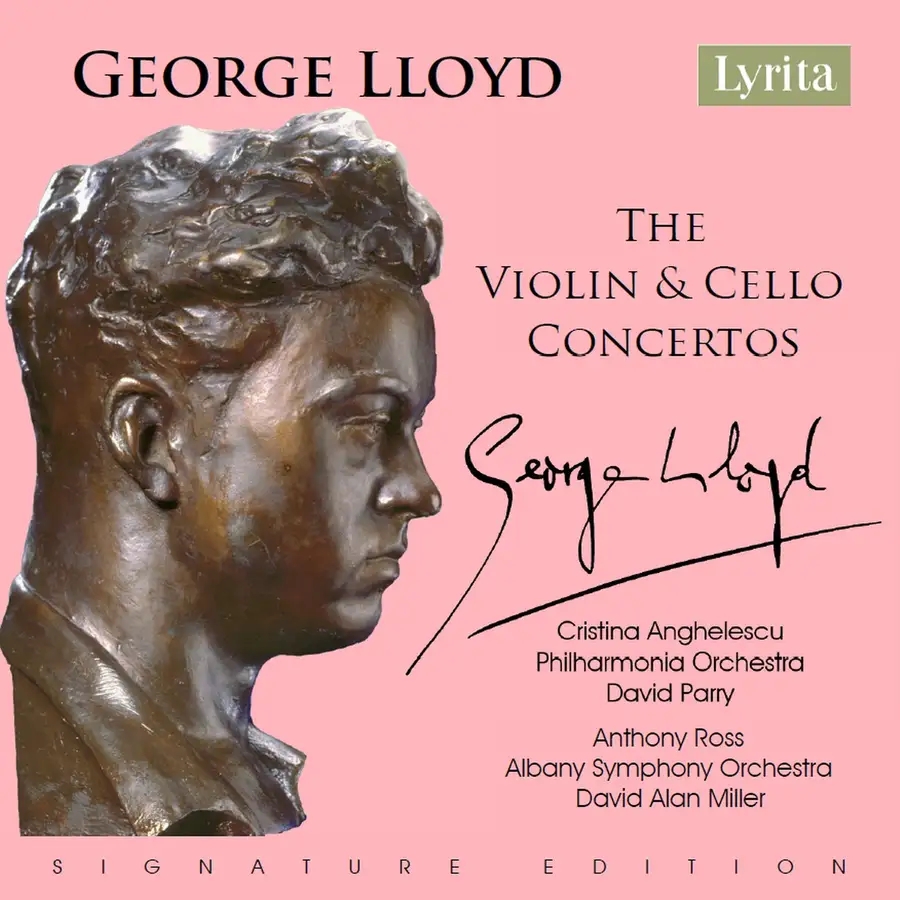
George Lloyd
Lament, Air and Dance (1975)
Violin Sonata (1978)
Seven Extracts from ‘The Serf’ (1938, arr. 1974)
Tasmin Little (violin), Martin Roscoe (piano); Ruth Rogers (violin), Simon Callaghan (piano) (Extracts from The Serf)
Lyrita SRCD.424 [two discs, 60’33” and 28’16”]
Producers George Lloyd, Adrian Farmer (The Serf) Engineers Tony Faulkner, Adrian Farmer (The Serf)
Recorded 7-8 September 1989 at St Martin’s, East Woodhay; 10 June at Concert Hall, Wyastone Leys, Monmouth (The Serf)
Reviewed by Richard Whitehouse
What’s the story?
Lyrita’s eminently worthwhile Signature Edition devoted to the reissue of Albany recordings of George Lloyd (1913-1998) continues with this volume of his output for violin and piano, here re-released with the addition of music that has been specially recorded for the occasion.
What’s the music like?
Those who have been following this series (or who have those original issues) will know that Lloyd often devoted himself to a specific medium at certain times in his life, and so it proved with this particular duo. Despite having studied the violin with no less than Albert Sammons, he wrote nothing centred on this instrument until his First Violin Concerto of 1970. Between then and its successor (both on SRCD.2421-22) seven years later, he also essayed two major works for violin and piano that reflect the ambition of his symphonies from previous decades.
Although not designated such, Lament, Air and Dance is hardly less of a sonata than the piece which followed. Not least its Lament whose spacious if methodical unfolding on the lines of a chaconne, albeit that in G minor by Vitali rather than the more expected one in D minor by Bach, exhibits formal cohesion to balance its emotional immediacy. The relatively brief Air provides an oasis of lyrical calm, then the Dance makes for a more than viable balance with its bravura writing and a rhythmic verve that fairly dominates those impetuous closing bars.
Seemingly begun the following year but only finished in 1978 (the composer’s website and present booklet note diverge on this), the Violin Sonata is cast on almost the same scale, but its three sections unfold without pause. The notion of a one-movement conception is further reinforced by its initial Largamente’s two main themes – respectively rhythmic and melodic – that evolve through the central Moderato’s brief while delectably whimsical course, to their elaboration and eventual fusion in a Finale which builds to a decisive and impassioned close.
Before either of these works, Lloyd had effectively ‘tried out’ this medium by extracting then arranging seven pieces from his second opera The Serf – which, one senses, he considered his greatest achievement such that the aborted BBC production and recording in 1990 must have been a sore disappointment. Those familiar with the first of his two orchestral suites arranged as late as 1997 (SRCD.2417-18) will recognize some of this music, but the present sequence appeal taken as an overall entity or as individual items which almost all make ideal encores.
Does it all work?
Yes, not least for the fact that Lloyd’s music is idiomatically conceived for whatever medium with which he chose to work. Both main works benefit from the commitment of Tasmin Little and Martin Roscoe in teasing expressive nuances out of music that, not for the first time with this composer, is subtler and more ambivalent than often supposed. Nor are Ruth Rogers and Simon Callaghan found wanting in those extracts from The Serf, recorded just a few months ago and welcome enhancement of what was already a desirable release in the Albany series.
Is it recommended?
Indeed, given the excellence of playing, recording and Paul Conway’s customarily thorough annotations. This series of George Lloyd reissues awaits his operas Iernin and John Socman for completion, though if it could run to a new recording of The Serf then so much the better.
Listen & Buy
For further information visit the dedicated page for the George Lloyd Signature Series. For more on the composer himself, head to the George Lloyd website
Published post no.2,375 – Wednesday 27 November 2024






